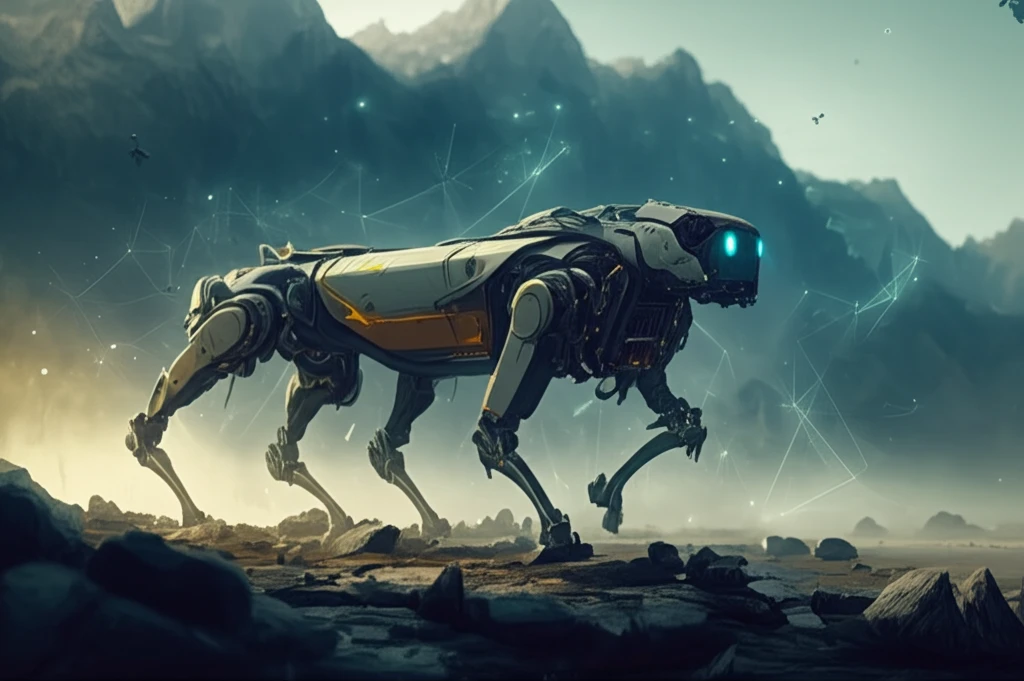
Unlock Stability: How Mutual Information Can Revolutionize Quadruped Robot Locomotion
"Explore how leveraging mutual information in Central Pattern Generators (CPGs) can lead to more coordinated and stable movements in quadruped robots."
Quadruped robots, inspired by four-legged animals, have long fascinated researchers and engineers alike. These robots hold immense potential in various applications, from search and rescue missions to exploring terrains inaccessible to humans. A key challenge, however, lies in designing control systems that enable these robots to move with stability, coordination, and efficiency. Traditional methods often rely on hand-crafted utility measures that can be limiting.
Central Pattern Generators (CPGs) offer a promising avenue for controlling legged robots. CPGs are neural networks that produce rhythmic patterns, ideal for generating the coordinated movements required for walking, running, and other forms of locomotion. Imagine a simplified 'brain' for each leg, working in harmony to create a fluid gait. However, configuring these networks for optimal performance on a specific robot platform remains a complex task.
Now, researchers are exploring a novel approach: using mutual information to guide the optimization of CPGs. Mutual information, a concept from information theory, quantifies the statistical dependence between different components of a system. By maximizing mutual information within the robot's control system, engineers aim to create robots that are not only faster but also more coordinated and stable. This approach moves beyond purely task-dependent metrics, focusing on the inherent properties of the robot itself.
Mutual Information: A New Path to Robot Control

The heart of this innovative method lies in using mutual information (MI) as a selection pressure during the evolutionary process of a Genetic Algorithm (GA). Think of a GA as a method of 'survival of the fittest' for robot controllers. The GA explores different configurations of the CPG, and MI acts as a guide, favoring those configurations that lead to more coordinated movements. In essence, it encourages the robot's joints and sensors to work together harmoniously, maximizing both diversity and coordination within the system.
- Controller 1: Used only mutual information as the fitness function.
- Controller 2: Focused solely on maximizing the robot's forward displacement (a task-based approach).
- Controller 3: Combined both mutual information and forward displacement in the fitness function.
The Future of Robot Locomotion
This research marks a significant step forward in the quest to create more versatile and robust quadruped robots. By leveraging the principles of information theory, engineers can develop control systems that are not only efficient but also inherently adaptable to changing environments and task demands. Future research will explore the use of different information-theoretic measures, such as transfer entropy, and apply these concepts to more complex robotic platforms, including bipedal robots. Imagine a future where robots seamlessly navigate challenging terrains, assist in disaster relief efforts, and even become our companions, all thanks to the power of mutual information.
